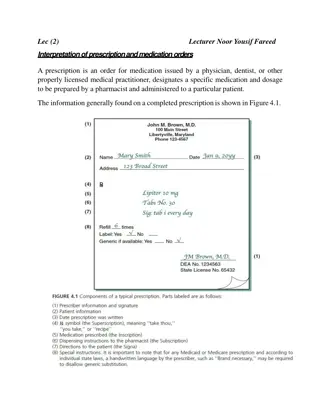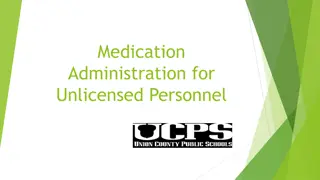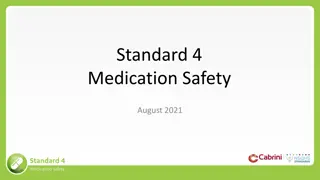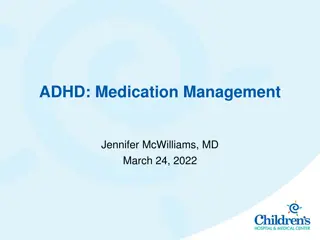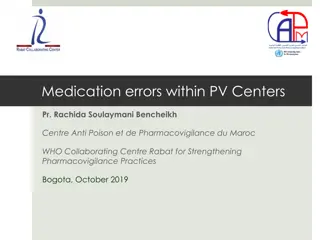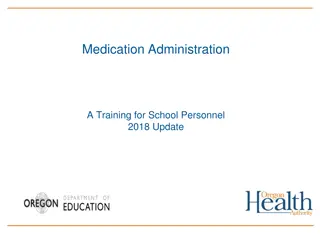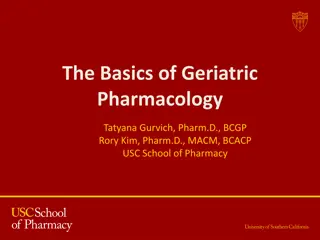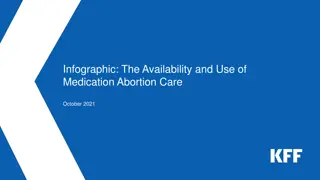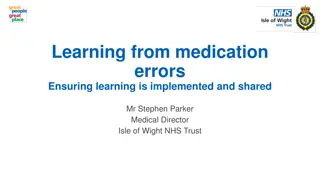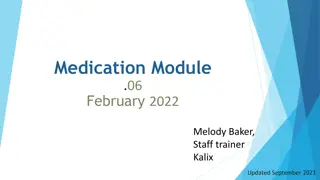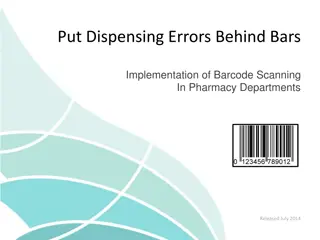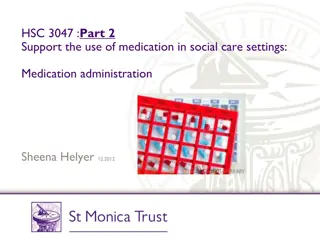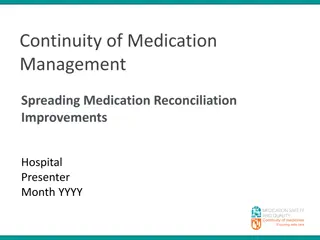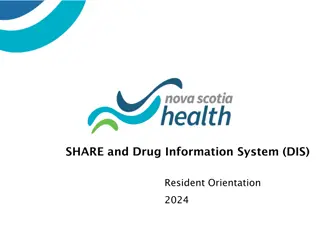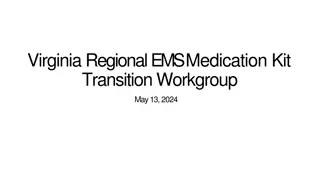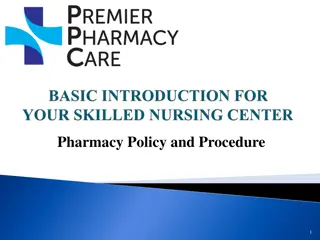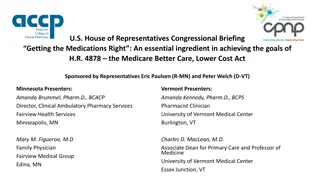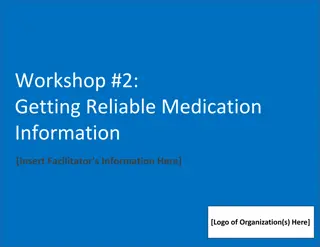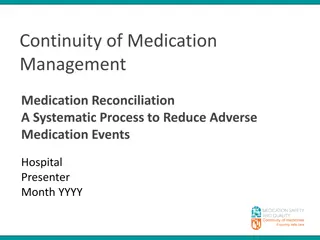Understanding Medication Errors in Healthcare
Medication errors are preventable mistakes in medication use that can lead to patient harm. Factors contributing to these errors include human-related, system-related, and medication-related issues. Human-related factors involve providers and patients being overworked, under-trained, or distracted, while system-related factors include lack of communication and poor workflow. Medication-related errors can stem from look-alike/sound-alike medications. Types of medication errors include prescribing, dispensing, administration, and patient compliance errors.
Download Presentation

Please find below an Image/Link to download the presentation.
The content on the website is provided AS IS for your information and personal use only. It may not be sold, licensed, or shared on other websites without obtaining consent from the author. Download presentation by click this link. If you encounter any issues during the download, it is possible that the publisher has removed the file from their server.
E N D
Presentation Transcript
MEDICATION ERRORS "A medication error is any preventable cause or lead to inappropriate medication use or patient harm while the medication is in the control of the health care professional, patient, or consumer. Such events may be related to professional practice, health care products, procedures, and systems, including prescribing; order communication; product labeling, packaging, and nomenclature; compounding; dispensing; distribution; administration; education; monitoring; and use." preventable event that may
FACTORS CONTRIBUTING TO MEDICATION ERRORS Human-related System-related Medication-related
HUMAN-RELATED FACTORS Providers Patients Over-worked Under-trained Competence Distracted Illness Stressed In a hurry Health literacy level Do not understand the medication/use Trust providers to not make mistakes
SYSTEM-RELATED FACTORS Lack of communication Poor workflow Disorganized workspace Inadequate tools to complete work Lack of supervision
MEDICATION-RELATED ERRORS Look-alike/sound-alike medications Multiple dosage forms and strengths
TYPES OF MEDICATION ERRORS Medication errors include prescribing errors, dispensing errors, medication administration errors, and patient compliance errors.
Prescribing error Prescribing error Incorrect drug selection (based on indications, contraindications, known allergies, existing drug therapy, and other factors), dose, dosage form, quantity, route, concentration, rate of administration, or instructions for use of a drug product ordered or authorized by physician (or other legitimate prescriber); illegible prescriptions or medication orders that lead to errors that reach the patient Omission error Omission error The failure to administer an ordered dose to a patient before the next scheduled dose, if any.
Wrong time error Wrong time error Administration of medication outside a predefined time interval from its scheduled administration time (this interval should be established by each individual health care facility) Unauthorized drug error Unauthorized drug error Administration to the patient of medication not authorized by a legitimate prescriber for the patient Improper dose error Improper dose error Administration to the patient of a dose that is greater than or less than the amount ordered by the prescriber or administration of duplicate doses to the patient, i.e., one or more dosage units in addition to those that were ordered.
Wrong dosage Wrong dosage- -form error Administration to the patient of a drug product in a different dosage form than ordered by the prescriber Wrong drug Wrong drug- -preparation error preparation error Drug product incorrectly formulated or manipulated before administration Wrong administration Wrong administration- -technique error technique error Inappropriate procedure or improper technique in the administration of a drug form error Deteriorated drug error Deteriorated drug error Administration of a drug that has expired or for which the physical or chemical dosage-form integrity has been compromised
Monitoring error Monitoring error Failure to review a prescribed regimen for appropriateness and detection of problems, or failure to use appropriate clinical or laboratory data for adequate assessment of patient response to prescribed therapy Compliance error Compliance error Inappropriate patient behavior regarding adherence to a prescribed medication regimen Other medication error Other medication error Any medication error that does not fall into one of above predefined categories
PHARMACIST ROLE IN IMPROVING MEDICATION SAFETY Automation and computerization of medication Automation and computerization of medication- - use processes and tasks use processes and tasks. Examples include (a) the use of technologically and clinically sound computerized drug-information systems; (b) direct physician order entry, which provides drug information and warnings during order input; (c) the use of intravenous infusion pumps with fail- safe design mechanisms to prevent free-flow.
Drug protocols and standard order forms Drug protocols and standard order forms to guide the safe use of medications by eliminating problems with illegible handwriting and standardizing safe order communication.
Independent double Independent double- -check systems These are tools that can reduce the risk of errors if one person independently checks another s work. The likelihood of two individuals making the same error with the same medication for the same patient is quite small. check systems Staff education Staff education It can be an important error-prevention strategy when it is combined with other approaches that strengthen the medication-use system.


